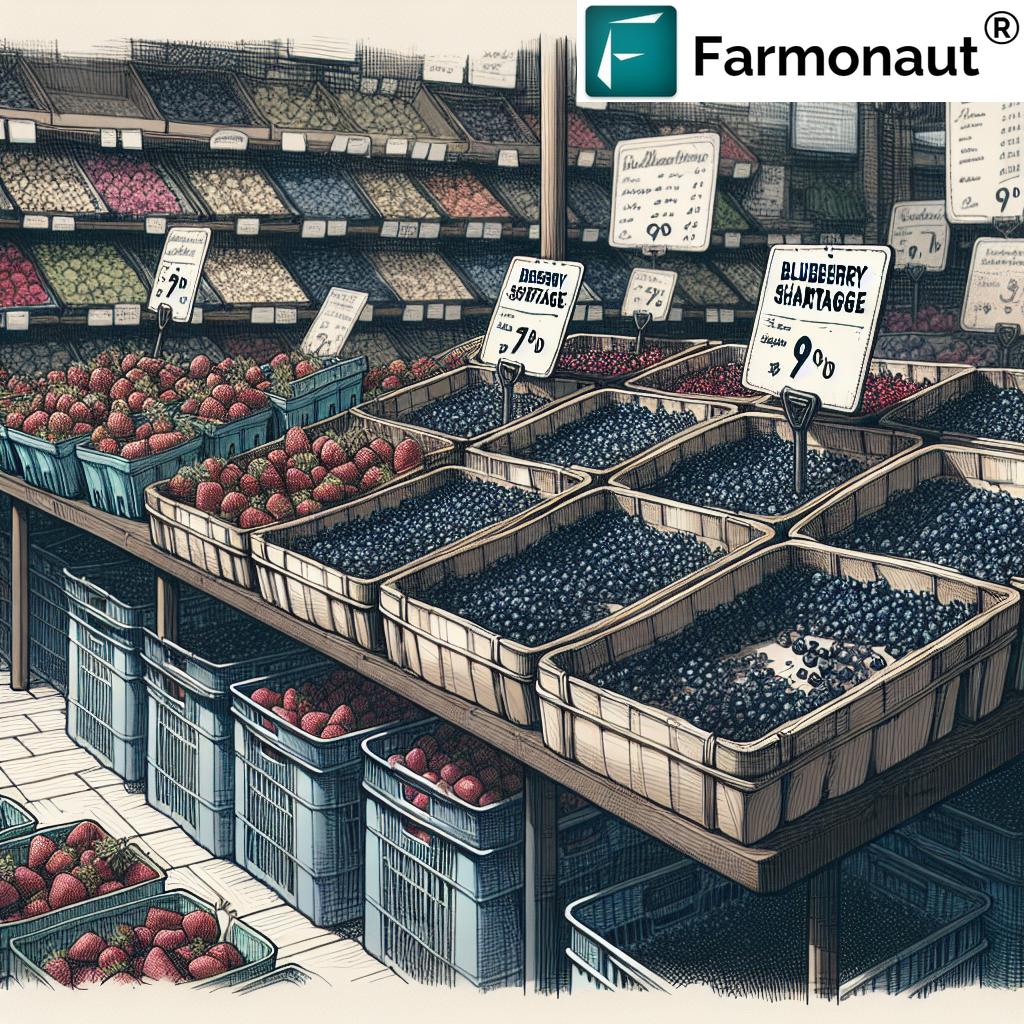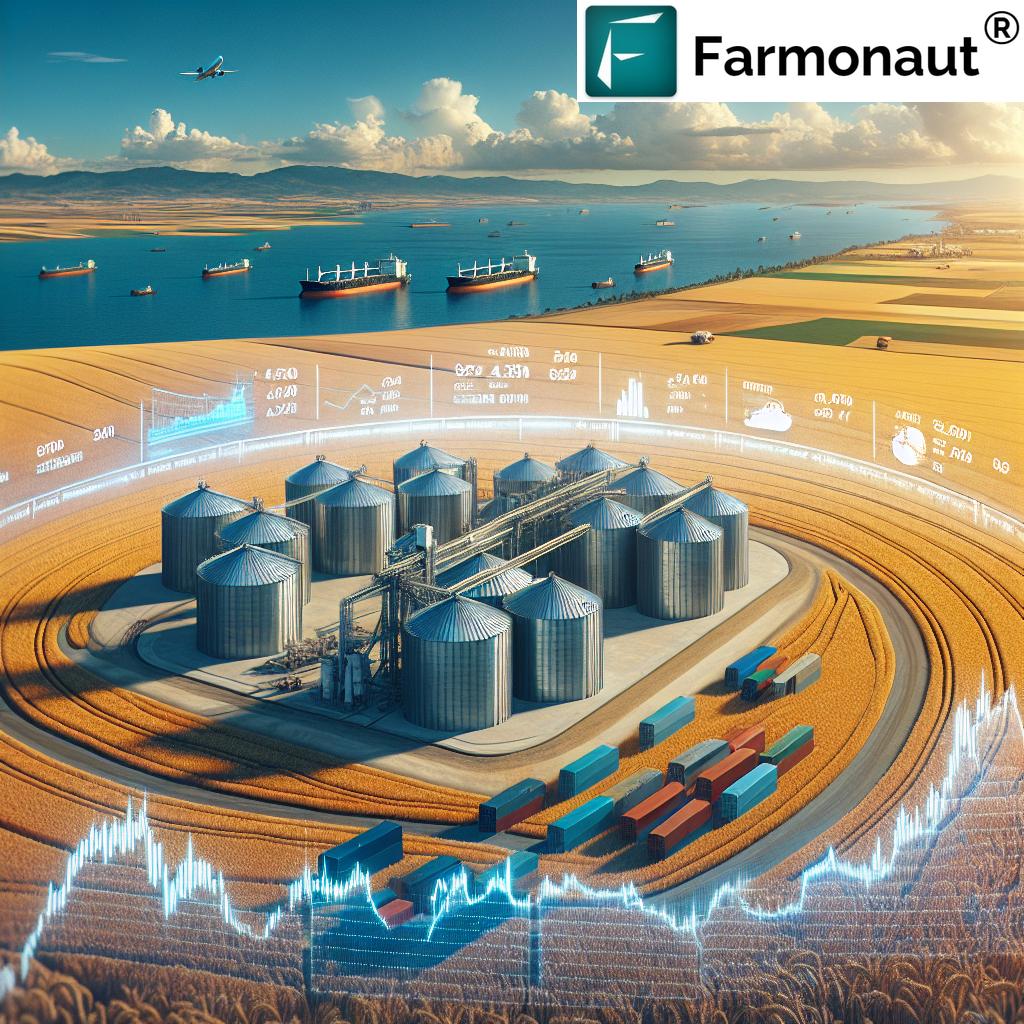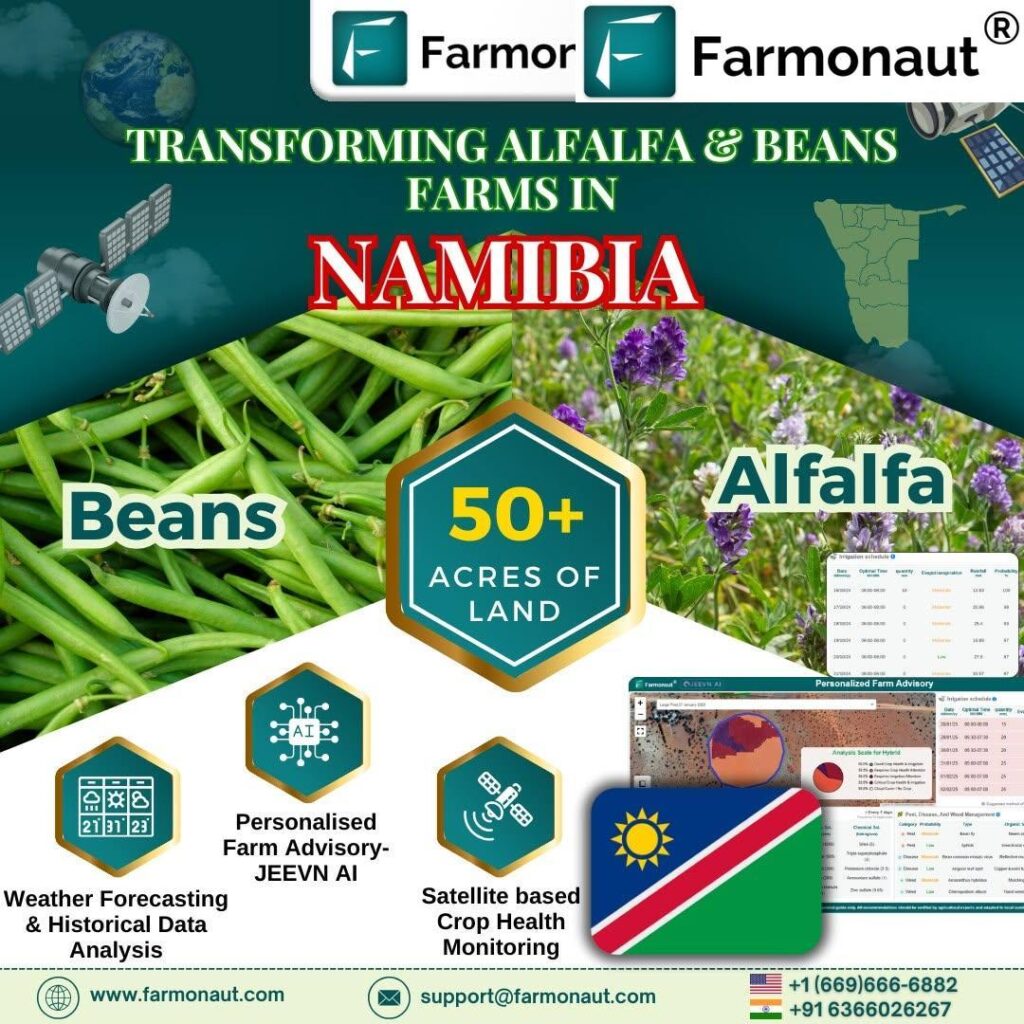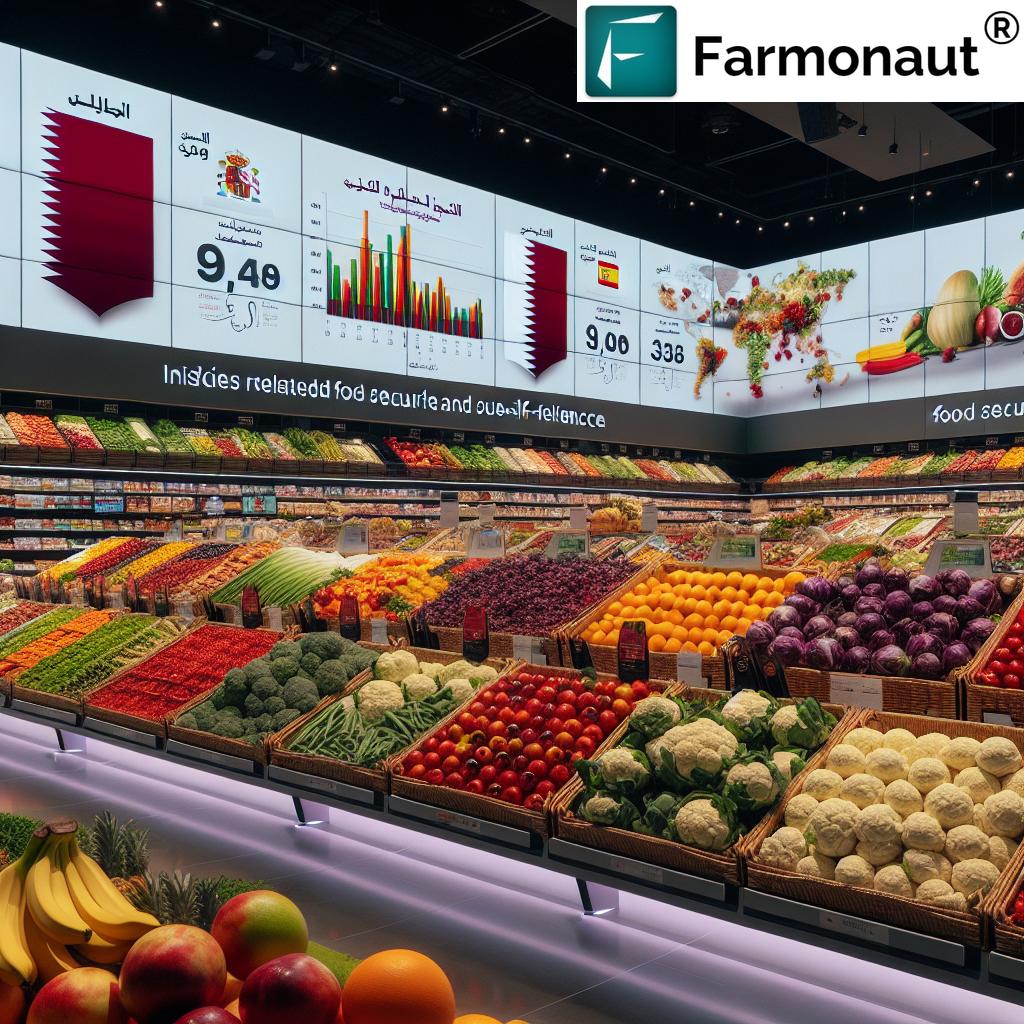Blueberry Shortage 2025: Causes, Impacts & Solutions
“Blueberry yields are projected to drop by 30% in 2025 due to climate change and labor shortages.”
Understanding the Blueberry Shortage 2025: Scope, Severity, and Significance
The blueberry shortage 2025 is causing a seismic shift within the global agricultural sector. Blueberries, once an affordable staple in diets worldwide, are facing severe scarcity.
This shortage isn’t isolated to one market or region—it’s a global phenomenon, affecting both domestic and international supply chains. The implications of this crisis touch every aspect of the blueberry supply chain: from farming practices to market prices, consumer habits, and sustainable food security.
- The average availability of blueberries in major markets is projected to drop by over 25% compared to previous years.
- Consumers are already facing reduced supply and surging prices at retail outlets and food service providers.
- This scarcity is tightly linked to multiple compounding factors—most notably, erratic weather patterns, pest infestations, labor and distribution bottlenecks, and rising global demand.

Major Causes of Blueberry Shortages in 2025
To develop effective solutions, we must first analyze the causes of blueberry shortages and understand their intersections:
Several critical factors are converging to create this crisis: climate change and unpredictable weather patterns, increased pests and diseases in blueberry crops, ongoing labor shortages, and complex supply chain disruptions. Each factor has a distinct impact but their synergy leads to reduced blueberry yields and volatile global markets.
1. Effects of Climate Change on Blueberries
- Erratic weather and frosts: Blueberries require specific climate conditions—moderate winters, predictable rainfall, and frost-free early growing seasons. Sudden changes, such as late spring frosts in the Pacific Northwest (a vital blueberry-producing region), have led to damaged early blooms and substantial reductions in fruit set.
- Increased Droughts & Rainfall: Intense droughts and periods of excessive rainfall are both detrimental. Drought can impair flowering and fruiting, while persistent rain promotes fungal diseases and berry spoilage.
- Rising average temperatures: These can misalign blueberry phenology (development stages) with pollinator activity and seasonal cues, causing further reductions in yield.
2. Pests and Diseases in Blueberry Crops
- Spotted Wing Drosophila: This invasive fruit fly has become a major blueberry pest, especially as changing climate conditions favor its proliferation. It lays eggs within ripening fruit, making berries unmarketable and causing direct losses.
- Mummy Berry Disease: This fungal disease mummifies developing berries, drastically reducing harvestable yields.
- Pest Infestations Exacerbated: Warmer winters allow more pests to survive and infest the next growing season, creating compounding pest and disease cycles.
3. Labor Shortages in Blueberry Farming
- Worker availability: Blueberry farming is labor-intensive, especially during the narrow harvest windows. Absenteeism, restrictive immigration policies, and consequences from the lingering COVID-19 pandemic have reduced available workers for critical cultivation tasks.
- Impact on Timely Harvests: Labor scarcity means berries cannot be picked at optimal ripeness, leading to produce losses and spoilage.
4. Blueberry Supply Chain Disruptions
- Geopolitical and Transportation Issues: The past few years have seen continued supply chain disruptions impacting blueberry distribution. Geopolitical instability, most notably in maritime shipping lanes, and unpredictable fuel prices, add uncertainty and bottlenecks.
- Logistical Challenges: Delayed shipments, lack of cold storage facilities, and rising transport costs force both domestic and international buyers to pay premium prices or face shortages in markets.

“Global blueberry prices may rise by up to 40% in 2025, impacting both farmers and consumers worldwide.”
Impact of Blueberry Shortage on Agriculture, Farming & Forestry
The impact of blueberry shortage on agriculture is profound and multifaceted, with direct and indirect effects on farming, food processing, domestic and global market stability, and even forestry ecosystems.
Economic Strain on Blueberry Farmers
- Financial Losses: With yields dropping by up to 30% and production costs rising due to increased pest management and labor, many farmers face unsustainable profit margins.
- Risk of Crop Switching: Facing persistent volatility and uncertainty, some producers are considering transitioning from blueberries to more resilient crops, threatening long-term crop diversity and regional agricultural practices.
Market Volatility & Price Fluctuations
- Blueberry Market Prices: The scarcity of supply has caused price volatility—with average consumer price increases estimated at 20–40% in key markets.
- Implications for Food Processors: Industries utilizing blueberries as a key ingredient (e.g., yogurt, baked goods, packaged snacks) are grappling with either expensive ingredient substitution or reformulation.
Implications for Labor and Rural Communities
- Reduced Seasonal Work: With lower production, there are fewer employment opportunities for much-needed seasonal agricultural workers, affecting rural livelihoods.
Intersections with Forestry and Land Use
- Land Use Changes: As some blueberry fields are abandoned or fallow due to economic pressure, these areas may undergo natural succession, resulting in gradual reforestation.
- Wildlife Habitat Shifts: Blueberry fields are important for numerous wildlife species, including pollinators and migratory birds. Shifts in land use could disrupt these habitats, reducing biodiversity.
Video: How Farmonaut’s Satellite Technology is Revolutionizing Land Use in Agriculture
Consumer Response & Blueberry Market Prices
The consumer response to berry shortages and blueberry market prices illustrates how closely the farm and table are linked.
- Increased Prices & Scarcity: Consumers see blueberry prices nearing all-time highs. Many supermarkets are imposing purchase limits, further intensifying perceived shortages.
- Product Reformulation: Packaged goods producers, faced with expensive or unavailable blueberries, substitute with strawberries, blackberries, or flavor analogues—though none match the full nutritional value or unique flavor of blueberries.
- Growth of Local Markets: An upsurge in demand for locally grown, traceable berries is evident. Consumers are seeking transparent, sustainable supply chains, fueling growth in product traceability solutions.
- Sustainable Choices: Environmentally conscious consumers are increasingly selecting produce grown with verified sustainable blueberry farming practices, a trend that also encourages farmers to implement climate-smart carbon footprinting solutions.
Video: Unlocking Soil Organic Carbon: The Secret to Sustainable Farming with Farmonaut
Strategies to Mitigate Fruit Shortages & Enhance Resilience
A comprehensive approach is required for strategies to mitigate fruit shortages, build resilience, and secure long-term agricultural stability:
1. Research & Development of Resilient Varieties
- Investment in breeding blueberry cultivars resistant to climate extremes, pests, and diseases offers the best long-term defense against similar shortages.
- Use of precision agriculture tools—such as large-scale farm management platforms—allows breeders and extension specialists to monitor and select for improved crop traits efficiently.
2. Adoption of Sustainable Blueberry Farming Practices
- Integrated pest management, soil conservation, and water-efficient irrigation form the foundation of stable yields—while also preserving the natural resource base.
- Satellite-based crop health monitoring systems provide real-time data on stress patterns, helping farmers optimize inputs and reduce resource wastage.
3. Labor Force Policy Interventions
- Improving conditions for agricultural workers (fair wages, safe housing) and facilitating legal, seasonal worker programs helps stabilize the workforce.
- Greater adoption of agricultural mechanization may support harvesting where labor is persistently scarce.
4. Supply Chain Optimization & Infrastructure
- Improving cold storage networks, investing in rapid transit from field to consumer, and fleet management tools reduce spoilage, lower distribution costs, and minimize logistic bottlenecks in the blueberry supply chain.
- Enhanced transparency through blockchain-based traceability systems supports real-time monitoring of supply and demand fluctuations.
5. Consumer Education and Support for Local Agriculture
- Well-informed consumers can better understand short-term price volatility and the benefits of supporting local farms that embrace resilient, sustainable agricultural practices.
- Localized purchasing supports small farmers and shortens supply chains, reducing overall carbon emissions and helping adapt to future shocks.
Video: Explore Farmonaut’s Advanced Crop Monitoring & Yield Prediction
Role of Technology & Solutions from Farmonaut
As the agriculture sector adapts to recurring food supply shocks, precision agriculture and technological solutions provide critical support.
At Farmonaut, our mission is to empower farmers, agribusinesses, governments, and related stakeholders with cost-effective, advanced tools for real-time decision making, yield optimization, and supply chain transparency.
- Satellite-Based Crop Health Monitoring: We deliver in-depth insights into vegetation health, soil moisture, and risk of stress, enabling early intervention, effective irrigation, and targeted pest management. This optimizes crop yields and reduces losses, supporting resilient farming systems worldwide.
- Jeevn AI Advisory: Our AI-powered advisory system provides real-time, field-specific recommendations—aiding farmers in responding to unpredictable weather and dynamically managing their fields.
- Traceability and Blockchain: We enable complete transparency from farm to table, building trust and reducing risk by ensuring each product’s origin, processing, and distribution are verifiable. Learn more about blockchain-based traceability.
- Fleet Management: With our fleet and resource management tools, agribusinesses can optimize vehicle use, streamline operations, and minimize logistic bottlenecks—crucial during peak blueberry season.
- Carbon Footprinting: Our carbon footprinting tool gives real-time emissions dashboards to help farms improve sustainability and showcase climate-friendly practices to markets and consumers.
- API Access & Integration: Our satellite and weather data APIs—see API details and Developer Docs—let businesses and developers build custom dashboards or integrate our insights into their platforms.
Video: The Role of Artificial Intelligence in Agriculture – Farmonaut
Accessible Farm Management for All Scales
-
Our platform is available via web app

as well as Android
and iOS .
.
All to provide affordable, easy-to-use, and scalable solutions for every size of farm.
- Crop loan and insurance: Using farm area and yield verification from our satellite platform, banks and insurance providers can offer stronger, transparent, risk-adjusted lending and coverage—helping farmers recover from events like the 2025 blueberry shortage.
- Forest and Plantation Advisory: For larger landholders or mixed farm-forest systems, our forest advisory platform aids in balancing crop production, conservation, and sustainable land use.
Farmonaut Subscriptions: Unlock the Power of Precision Agriculture
Blueberry Shortage 2025: Causes, Impacts & Solutions Overview Table
| Cause | Estimated Impact (Quantitative) | Affected Stakeholders | Suggested Solutions |
|---|---|---|---|
| Erratic Weather / Climate Change | -25% to -30% crop yields +20% market price |
Farmers, Wholesalers, Consumers | Develop climate-resilient varieties, adopt weather-based AI advisories, diversify crops |
| Pests & Diseases (e.g., Spotted Wing Drosophila, Mummy Berry) | Up to -15% yields, +10% cost of pesticides | Growers, Field Workers | Integrated pest management, crop monitoring via satellite, develop disease-resistant crops |
| Labor Shortages | 10–20% crop lost (unharvested), +25% labor costs | Farmers, Rural Communities | Labor policy reforms, improved working conditions, seasonally automated equipment |
| Supply Chain Disruptions | 10–15% produce lost in transit, +15% consumer price | Distributors, Retailers, Consumers | Fleet/resource management, infrastructural upgrades, blockchain-based traceability |
| Consumer Demand Spike | 5–10% price surge annually | Processors, Retailers | Balanced imports/exports, market diversification, consumer education |
Access Precision Agriculture Anywhere
FAQ: Blueberry Shortage 2025 & Agricultural Impact
Q1: What is the primary cause of the blueberry shortage in 2025?
Multiple causes have converged: unpredictable weather patterns, climate change, increased pest and disease pressure, labor shortages, and ongoing global supply chain disruptions.
Q2: How are farmers and markets affected by blueberry supply chain disruptions?
Blueberry supply chain disruptions result in produce spoilage, delayed deliveries, and forced price hikes at every step, affecting both farmers’ profitability and consumer availability.
Q3: Can technology help mitigate future fruit shortages?
Absolutely. By integrating remote sensing, AI advisories, traceability, and resource optimization, technology such as Farmonaut’s solutions empowers resilience, prevents avoidable losses, and supports proactive planning at farm and market levels.
Q4: Why are local and sustainable blueberry farming practices so important?
They reduce input costs, safeguard against climate and disease, support local economies, and align with the growing consumer demand for trusted, environmentally-sound produce.
Q5: Where can businesses access high-quality farm monitoring and traceability solutions?
Platforms like Farmonaut provide user-friendly, affordable, and scalable precision agriculture tools via app and API—enabling actionable insights for farms, agribusinesses, governments, and food companies worldwide.
Conclusion: Adapting for a Sustainable Blueberry Future
The blueberry shortage 2025 is a defining moment for global agriculture. It highlights not just the vulnerabilities caused by climate change, pest increase, and supply chain complexity—but also the resilience and adaptability of forward-looking farmers, businesses, and consumers.
By investing in sustainable blueberry farming practices, embracing digital solutions, supporting labor reforms, and prioritizing transparent supply chains, the sector can mitigate future fruit shortages and ensure a stable, nutritious food supply.
With real-time data, satellite intelligence, and precision management tools, we at Farmonaut are dedicated to supporting a sustainable agricultural ecosystem—so that future generations continue to enjoy the vital benefits of blueberries and other resilient crops.
Ready to strengthen your farm’s resilience? Get started with Farmonaut today.

















